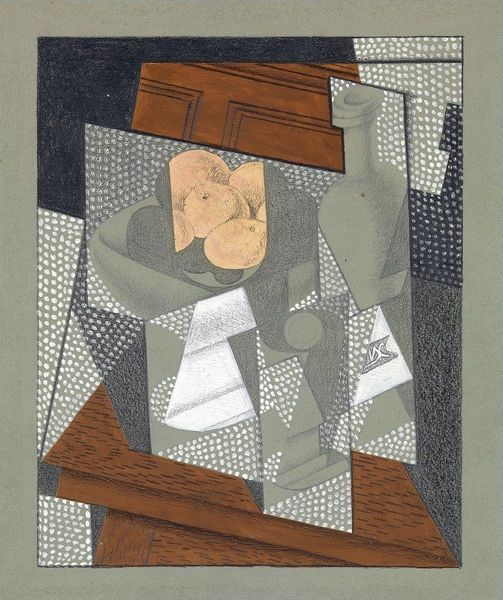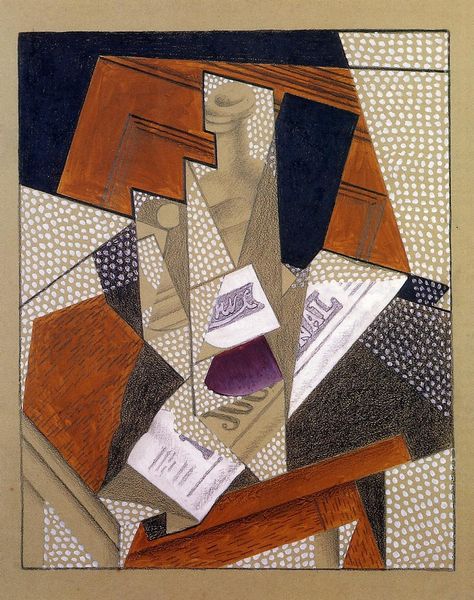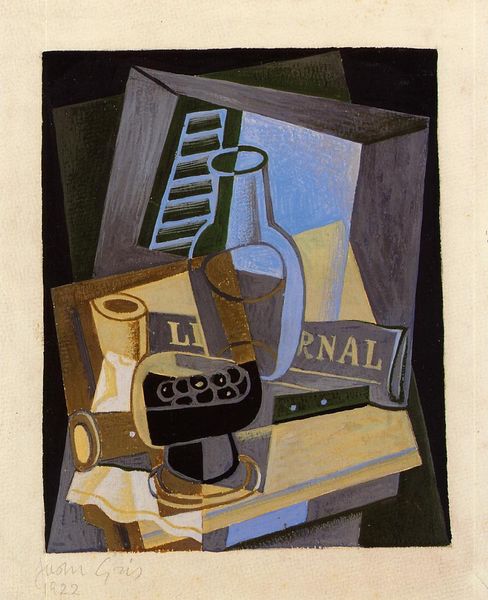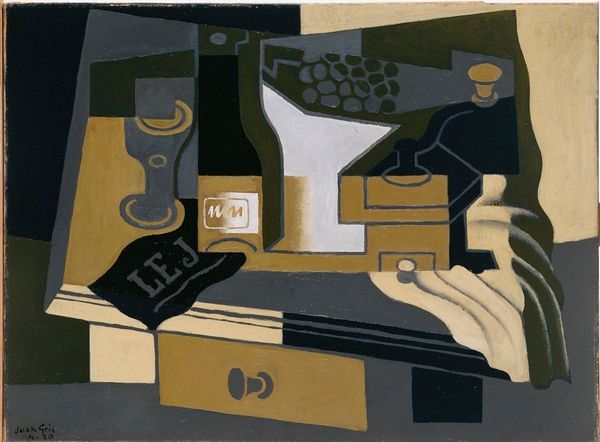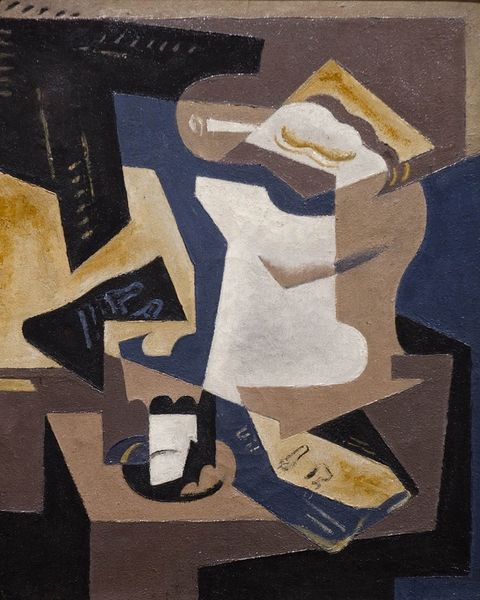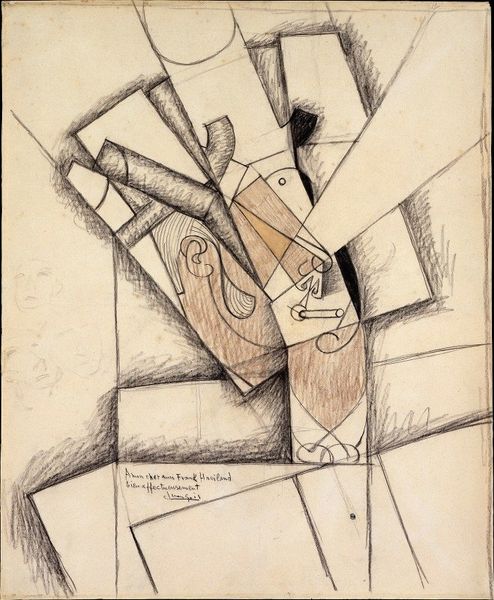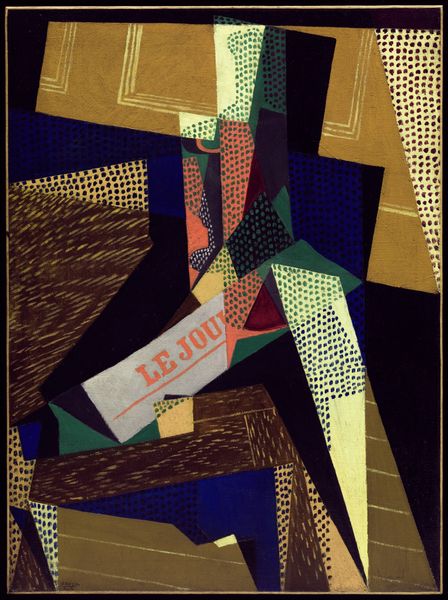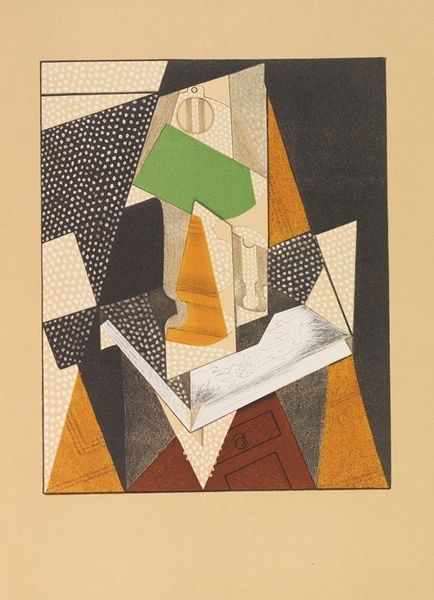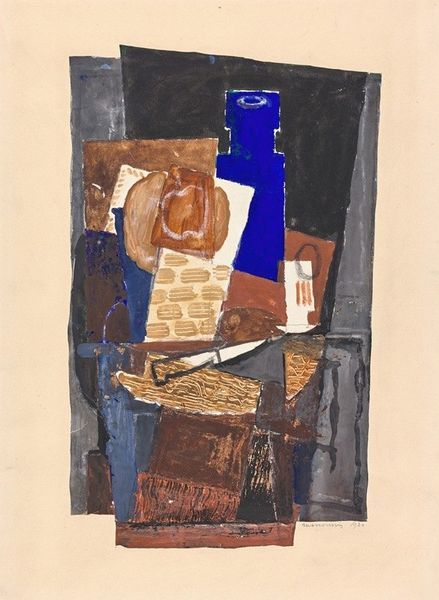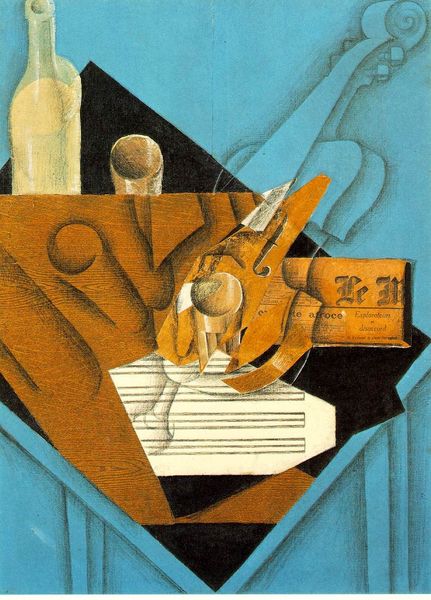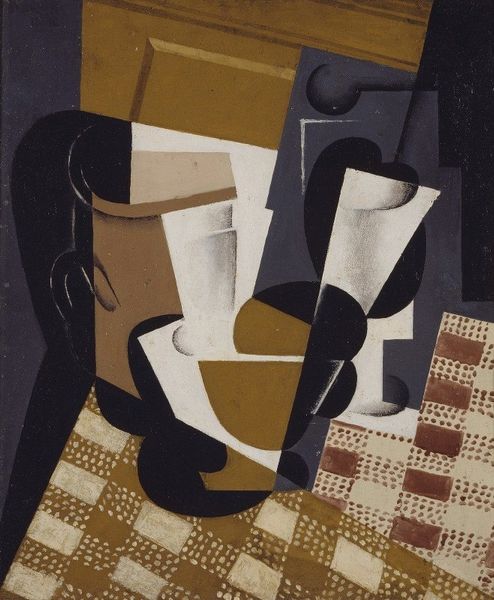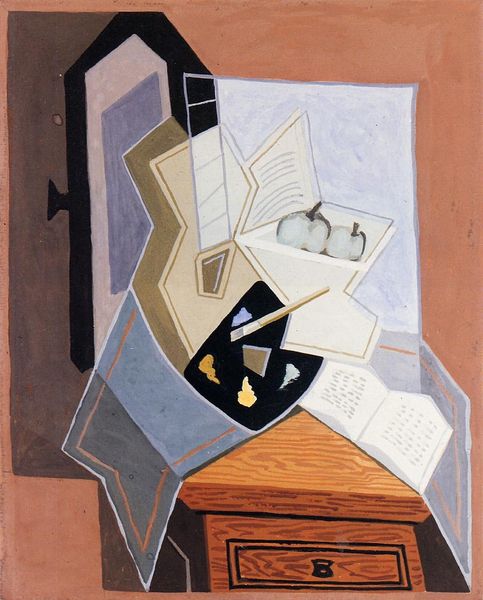
Coffee Grinder, Cup and Glass on a Table 1916
0:00
0:00
juangris
Museo Nacional Centro de Arte Reina Sofía (MNCARS), Madrid, Spain
drawing, paper, ink, graphite
#
drawing
#
cubism
#
paper
#
ink
#
graphite
Copyright: Public domain
Curator: Here we have Juan Gris's 1916 work, "Coffee Grinder, Cup and Glass on a Table," executed in graphite and ink on paper. What catches your eye first? Editor: The fragmented reality it presents. It feels almost melancholic, a still life not so still, with a sense of objects broken down, rearranged but still familiar, yet distinctly remote. Curator: I think that fragmentation speaks to the core of Cubism, its pursuit of capturing multiple viewpoints and representing the essence of an object rather than just its surface appearance. Note how the coffee grinder appears flattened and elongated, the cup seems cut open to expose its interior. Editor: Yes, but these everyday objects transcend the mere still life, entering a broader dialogue about industrial modernity. It's interesting that he has added "Peugeot Frères," alluding to the brand name of the company which made both coffee grinders and then, famously, cars. He brings in capitalism and machinery in subtle yet telling ways. Curator: Absolutely, it underscores the shifting relationship with industrial production. But I also see continuity – Gris, a Spaniard working in Paris, might also evoke Spain's traditional coffee culture by immortalizing something as mundane as the grinder alongside refined beverages like coffee and wine served in glasses. Editor: A push-pull of identities. Gris isn't just depicting objects; he's capturing a moment of transition where the handmade intersects with the machine-made, where cultural histories intersect with rapid modernization and where individual perception struggles to encompass the entirety of reality. This table isn’t a stage; it is the world in the making. Curator: His commitment to dissecting objects reveals the latent tension between these intersecting factors. Gris isn't content with easy visual solutions. Editor: And his insistence on the presence of labor seeps through the clean lines. Each choice – of materials, techniques – is not just aesthetic, but steeped in sociopolitical consciousness. Curator: It’s a complex representation. Reflecting both our memory of objects and our analytical attempts to capture reality, "Coffee Grinder, Cup and Glass on a Table" opens us to experience our reality. Editor: Leaving me contemplative of the power of visual expression to mirror the fragmentation of a moment in history, in 1916, one year before the end of WWI.
Comments
No comments
Be the first to comment and join the conversation on the ultimate creative platform.

